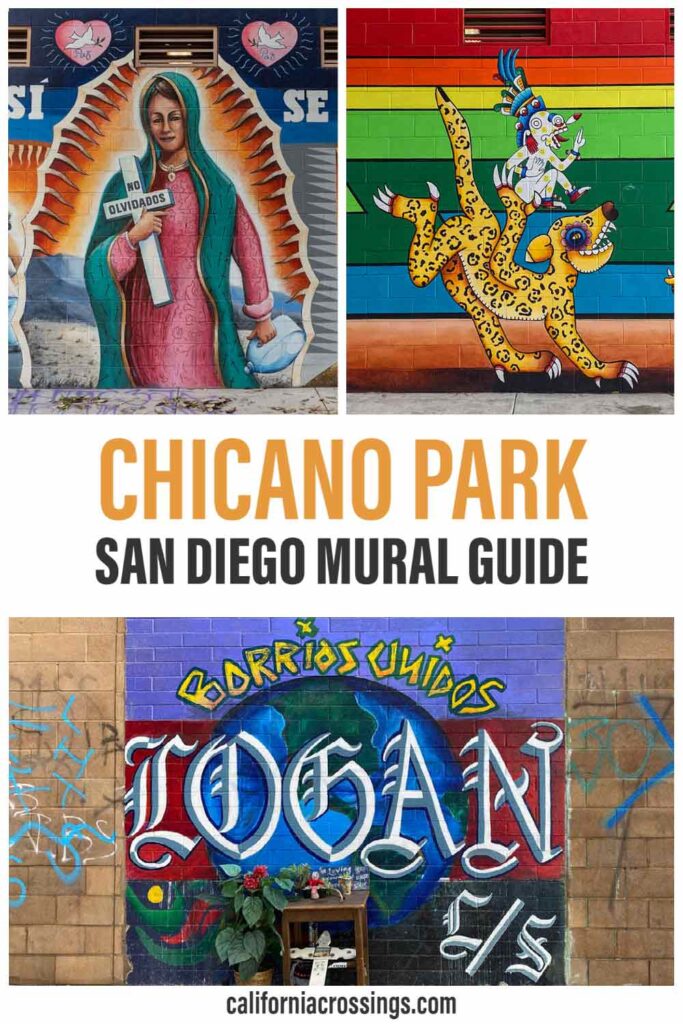There are a lot of fun things to do in San Diego. The city has great museums, long beaches and a world class zoo. But what can sometimes be missing from these popular spots is a sense of city’s rich Latino culture. If you want to understand that side of San Diego, you need to visit San Diego’s Chicano Park murals.
If you do visit…you will be rewarded with a big visual POW! These vertical murals visually burst all over the park, turning what would otherwise be a modest playground into a living museum of the Mexican-American experience.
We like these murals so much, that we’ve even featured San Diego on our list of the best street art locations in California.
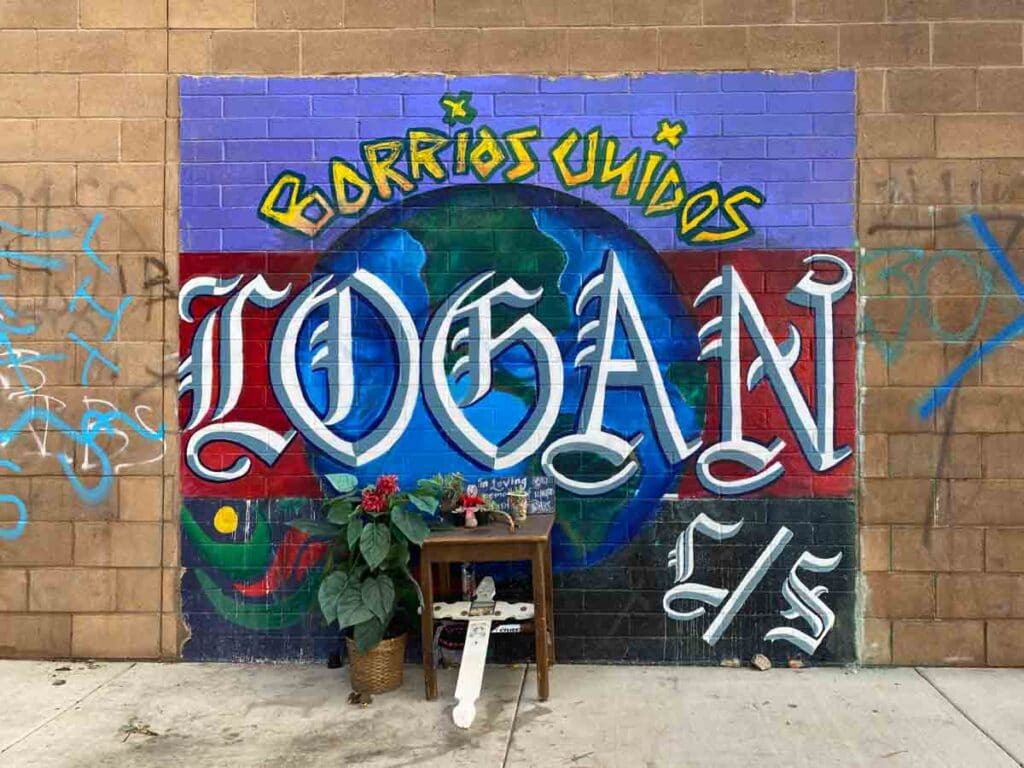
History of the Chicano Park Murals
By 1970, the Barrio Logan neighborhood was already under siege. They had lost housing to the shipyards (40’s) and junkyards (50’s). They lost further land to the erection of the I-5 freeway overpasses (1963) and yet more again to the construction of the Coronado bridge (1969).
So, when student Mario Solis saw bulldozers in the area, he got worried. He learned from the construction workers that instead of a promised park, the area was being turned into a California Highway Patrol parking lot. Solis immediately rallied his fellow students and the local community. In a matter of hours, hundreds of local residents had occupied the land. Rather than ask permission, they sprang into action, tilling the soil and planting gardens.

The area remained occupied until the city re-committed to turning the area into a park. The wheels of bureaucracy turn slowly, but in 1971, San Diego’s Chicano Park was inaugurated. Inspired by public art movements happening elsewhere in the country, local artists began lobbying for the installation of cultural murals.
By 1974, the murals began appearing in the park with ongoing bursts of painting and restoration work. Today, the murals in San Diego represent the largest public art installation in the US. They were born of protest and are maintained by pride.
I’ve sought out street art on 5 continents and nowhere have I seen such a creative use of space. The murals vertically activate what would otherwise be a dreary freeway overpass and then they exuberantly burst out of the park and down the street.
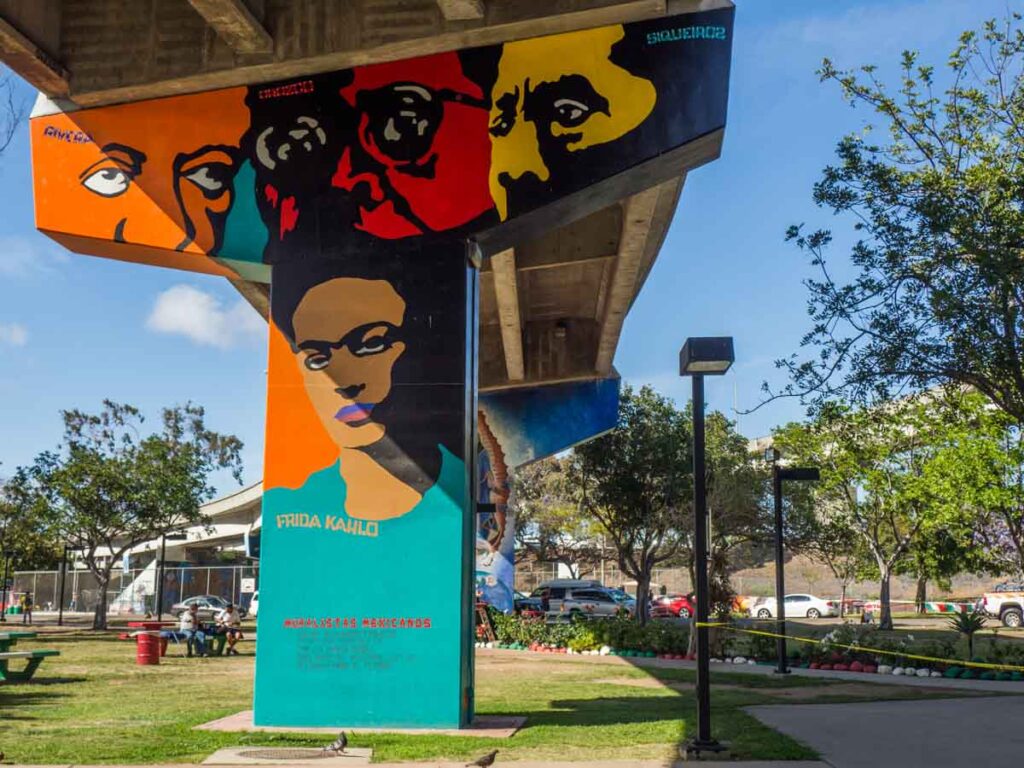
Stories of the Murals in San Diego
The content of the murals represent the spectrum of the Mexican-American experience from immigration to Aztec culture, the Chicano political rights movement and modern day environmental concerns.

The Immigrant Experience
Mexicans began immigrating to San Diego around 1910, right after the Mexican revolution. They settled in an area three miles south of downtown San Diego which came to be known as Barrio Logan. Over time, the residents in Barrio Logan assimilated into the San Diego economy, taking jobs at the naval shipyards. Then, as now, the immigrants struggled to learn the language, get jobs and gain legal residency status. Many of the murals touch upon the difficulty of the immigrant experience and the struggle to be seen as legitimate residents of America.
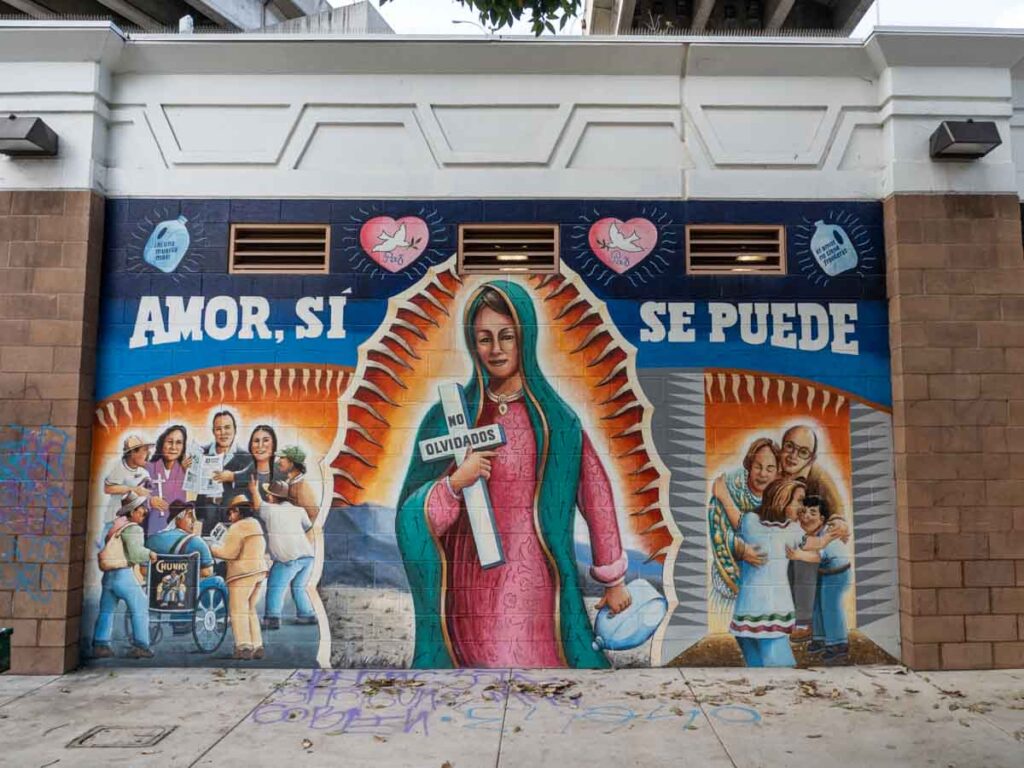
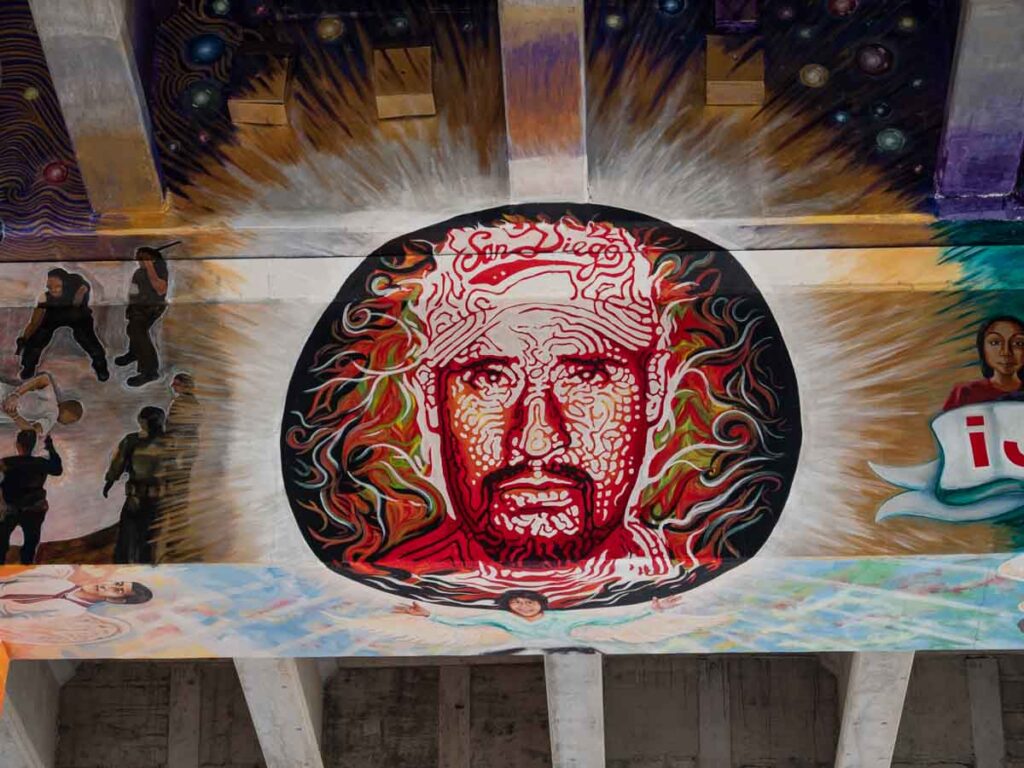
Some of the more recent murals also memorialize the death and mistreatment of immigrants. In the case of the mural above, Rojas died in 2010 after being taking into custody by federal agents. He was beaten and tazed, and then died of a heart attack.

Aztec Culture
Aztec iconography plays heavily in the Chicano Park murals. The Aztecs were the pre-Hispanic settlers of what is now Mexico. You can find iconic Aztec images sprinkled throughout the murals. One such image is Mictlan (featured above), which is a mythical Aztec underworld. Another is Quetzacotl (below). Quetzacoatl is variously referred to as a Mexican/Aztec/Toltec god responsible for wind, learning, death, resurrection, Venus, warfare and vegetation renewal–among other things.
You can find also find a beautiful mosaic Quetzacotl on my SF Mission street art tour.
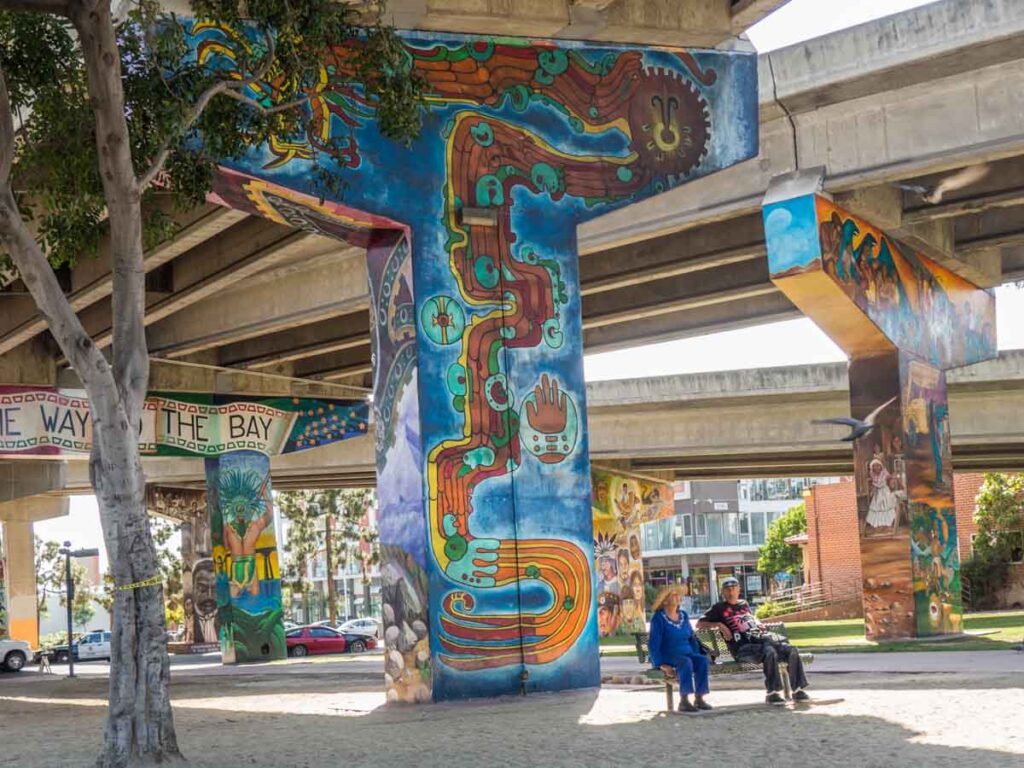
The Chicano Movement and the Nation of Aztlan
The Chicano Movement blossomed in the late 1960’s along with the rise of feminism and the black civil rights movement. “El Movimiento” worked to establish farm worker rights, voting and education rights and to eliminate the negative stereotyping of Mexican-Americans. There was a kerfuffle at the park in August of 2017 when white supremacists gathered to protest the “communist” nature of the labor movement but they were run off by police and supporters of the park’s message.

Aztlan represents the historic territory of the Aztec. There are many differing theories regarding the exact geographical borders for Aztlan which range from: central Mexico, the northwestern coast of Mexico and/or a large chunk of what is currently the southwestern United States.
The more militant wing of the Chicano movement advocated for the establishment of an independent Aztlan nation within the southwestern US. Well, that didn’t fly. However, the notion of a historically pre-Hispanic culture in the southwestern US has merit. Many of the Chicano Park murals keep that culture alive with Aztlan imagery.
The mural above combines Aztan imagery with the “Huelga” symbol, which was the flag for the United Farm Workers.
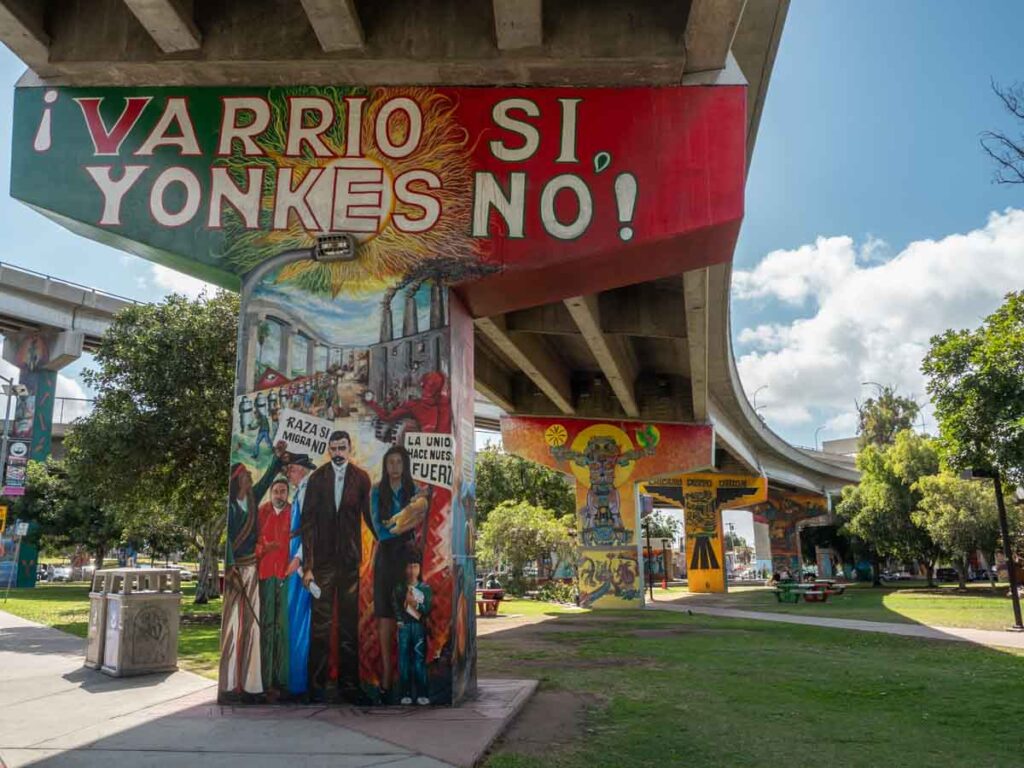
Modern Day Environmental Concerns
In the ’40s and ’50s thousands of residents of Barrio Logan were displaced by re-zoning rules which allowed for junkyards and shipyards. The junkyards in particular brought a great deal of pollution and toxic waste into the neighborhood. This sensitized the residents to a myriad of environmental concerns, such as environmental sustainability, clean neighborhoods and water issues.
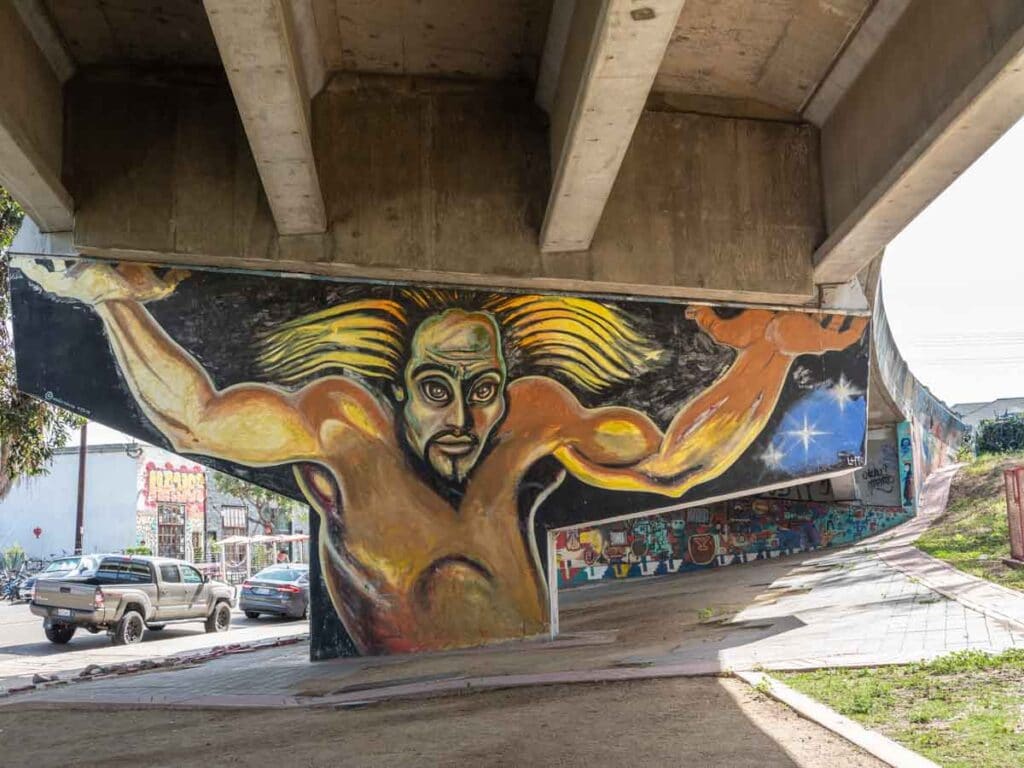
Visiting the Chicano Park Murals
The park is located 3 miles south of downtown San Diego. The interchange of I-5 and the Coronado bridge entrance looms over and shades the park. So if you are planning a visit to Coronado beach, you should detour off I-5 at the Logan Ave/Beardsley exit and spend some time at Chicano park before heading over to Coronado.
In addition to the street art, there is a skate park and picnic tables so you can make an afternoon of it. If you are visiting with kids, enjoy the playground in the park and also check out these San Diego family vacation tips. And if you find yourself in San Diego during the third week of April, you can participate in the Chicano Park San Diego anniversary celebration.

The visual POW and the heartfelt storytelling of these murals will give you great insight into Chicano political and cultural experience in America.
You can learn more about streetart by viewing Banksy’s documentary Exit Through the Gift Shop. You can also purchase a street art encyclopedia like the New Street Art, or the World Atlas of Street Art & Graffiti.
Share this San Diego street art with your friends:
